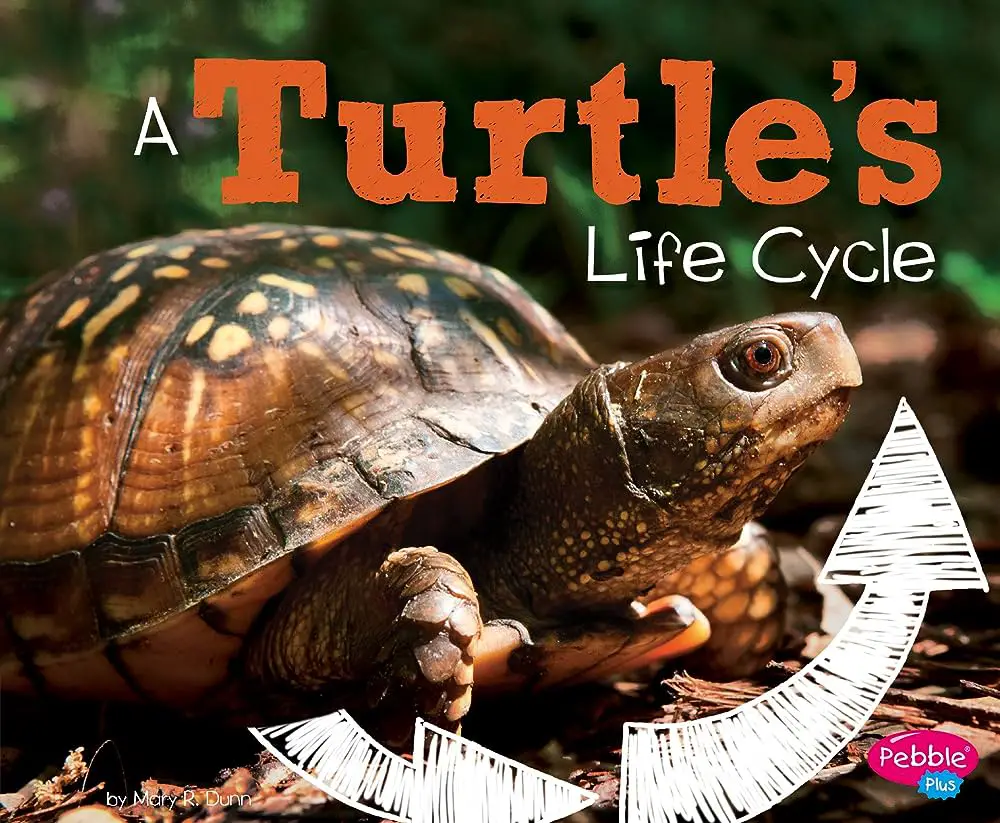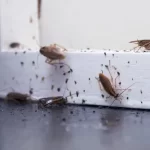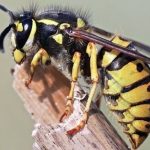Box turtle eggs typically take around 60 to 90 days to hatch. The hatching process can be influenced by factors such as temperature and humidity.
Now let’s dive into some fascinating information about box turtle eggs and their hatching journey. Box turtles, known for their dome-shaped shells and terrestrial lifestyle, have a unique reproductive process. Female box turtles lay their eggs in the ground, burying them to protect them from predators.
The eggs develop over several months, with the incubation period lasting approximately 60 to 90 days. During this time, the temperature and humidity levels in the nest play a crucial role in determining the hatching success. It is important to maintain optimal conditions to ensure the embryo’s proper development. Once the eggs hatch, the tiny hatchlings emerge and begin their adventurous journey into the world. Understanding the hatching process of box turtle eggs allows us to appreciate these remarkable creatures’ life cycle.

Credit: nationalzoo.si.edu
The Life Cycle Of Box Turtles
Box turtle eggs typically take around 70 to 90 days to hatch. The process involves the mother turtle burying her eggs, where the warmth of the soil plays a crucial role in incubation. Once hatched, the baby turtles emerge and embark on their journey of life.
Box turtle species and their habitat:
- Eastern box turtles, also known as terrapene carolina, are commonly found in the eastern united states.
- Three-toed box turtles, or terrapene carolina triunguis, are found in the south central united states and northern mexico.
- Coahuilan box turtles, or terrapene coahuila, are native to the coahuila region of mexico.
Unique characteristics of box turtles:
- Box turtles have a distinctive box-like shell that can hinge shut, providing protection from predators.
- They are small to medium-sized turtles, with most species growing to around 5-7 inches in length.
- Box turtles have a lifespan that can exceed 50 years in the wild.
- They are known for their ability to retract their head, legs, and tail fully into their shell.
Box turtles follow a fascinating life cycle that involves various stages of growth and reproduction. Understanding their life cycle can provide valuable insights into their behavior and habitat requirements. Here’s a breakdown of the life cycle of box turtles:
- Hatching:
- Box turtle eggs are typically laid in the ground during the summer months.
- The eggs incubate underground, protected by the surrounding soil.
- Incubation times vary depending on factors such as temperature, with an average range of 60-90 days.
- Once the eggs are ready to hatch, the turtles use their egg-tooth to break open the shell and emerge.
- Juvenile stage:
- Hatchling box turtles are tiny replicas of adult turtles, fully equipped with a miniature version of their characteristic shell.
- At this stage, they are particularly vulnerable to predators and must find shelter and food immediately after hatching.
- While they are capable of movement, hatchlings often stay in the same general area for some time, gradually exploring their surroundings.
- Growth and maturity:
- As box turtles grow, they shed their scutes (outer shell plates) and replace them with new ones.
- Their diet consists primarily of insects, worms, snails, fruits, and vegetation.
- Over the years, box turtles experience growth spurts and reach sexual maturity at around 5 to 10 years of age, varying depending on the species and environmental conditions.
- Once mature, box turtles actively seek out mates during the breeding season, which typically occurs in spring or early summer.
- Reproduction:
- Box turtles employ an elaborate courtship ritual involving head bobbing, circling, and biting.
- Mating can last for several hours, during which the male transfers sperm to the female.
- Females have the ability to store sperm for several years, enabling them to lay fertile eggs even without recent mating.
- They will then lay a clutch of eggs in a suitable nesting site, usually digging a hole in the ground and carefully burying the eggs.
Understanding the life cycle of box turtles not only highlights their incredible ability to adapt and survive but also emphasizes the need for habitat conservation and protection. By safeguarding their nesting areas and providing suitable environments, we can ensure the continued well-being and existence of these remarkable reptiles.
Nesting Behavior And Egg Laying
Box turtle eggs typically take around 70-90 days to hatch. The mother turtle buries her eggs in a shallow nest, where they develop and incubate until they’re ready to emerge as hatchlings.
Box turtles are fascinating creatures that go through a unique nesting process to lay their eggs. Understanding their nesting behavior and egg-laying rituals can provide valuable insights into the reproductive cycle of these reptiles. In this section, we will delve into the mating and courtship rituals of box turtles, as well as their selection of nesting sites and the process of laying and burying their eggs.
Box Turtle Mating And Courtship Rituals
- Box turtles reach sexual maturity around the age of 7 to 10 years.
- Mating generally takes place in the spring and early summer months.
- Male box turtles engage in a courtship ritual that involves head bobbing, circling, and biting the female’s shells.
- Once the female accepts the male’s advances, copulation occurs.
- Females may mate with multiple males during a breeding season to optimize genetic diversity.
Selection Of Nesting Sites
- Box turtles are known to be selective when it comes to choosing nesting sites.
- They prefer sandy or loamy soil with good drainage.
- The location should provide adequate sunlight and be away from potential disturbances.
- Preferred nesting sites often include open fields, forest edges, or sand dunes.
- Females return to the same nesting site or nearby areas year after year, showing site fidelity.
Laying And Burying The Eggs
- Female box turtles dig a flask-shaped nest using their hind legs and claws.
- The nest depth can range from 2 to 6 inches, depending on soil conditions.
- The female typically lays 3 to 8 eggs, although larger clutches have been observed.
- The eggs are usually round and have a flexible, leathery shell.
- After laying the eggs, the female carefully covers the nest with soil, concealing it from predators and maintaining proper temperature and humidity levels.
Understanding the nesting behavior and egg-laying process of box turtles highlights their adaptation to ensure the survival of their offspring. By exploring these fascinating aspects of their reproductive cycle, we can gain a deeper appreciation for the intricate world of box turtles.
Development And Incubation Period
Box turtle eggs typically take around 60 to 90 days to hatch, with proper incubation. Patience is key during the development period, ensuring optimal conditions for the eggs to grow and hatch successfully.
Box turtles are fascinating creatures, and one of the most intriguing aspects of their life cycle is the development and incubation of their eggs. Understanding how long it takes for box turtle eggs to hatch can shed light on this remarkable process.
Let’s explore the different stages of egg development, from their structure and composition to the factors that can influence their hatching.
Egg Structure And Composition:
- Box turtle eggs are relatively small, typically measuring around 1 to 1.5 inches in diameter.
- The shells of box turtle eggs are soft, leathery, and flexible, as opposed to the hard shells of bird eggs.
- The eggs have a porous surface that allows them to exchange gases with the surrounding environment.
- Inside the egg, there is a yolk that provides the nutrients necessary for the developing embryo.
Temperature-Dependent Sex Determination:
- Box turtles exhibit temperature-dependent sex determination, meaning that the temperature at which the eggs are incubated determines the gender of the offspring.
- Generally, cooler temperatures tend to produce male hatchlings, while warmer temperatures lead to female hatchlings.
- The specific temperature threshold for sex determination can vary among different species and populations.
Length Of Incubation Period:
- The incubation period of box turtle eggs can vary depending on environmental conditions, such as temperature and moisture.
- On average, box turtle eggs take around 60 to 90 days to hatch.
- However, the duration can be influenced by factors like the species of box turtle and the conditions in the nesting site.
Factors Affecting Egg Development And Hatching:
- Temperature: As mentioned earlier, temperature plays a crucial role in determining the embryo’s development and gender.
- Moisture: Proper humidity levels are vital for the eggs to retain their moisture and prevent dehydration.
- Nesting site: The location where the female box turtle chooses to lay her eggs can have an impact on their development. Factors such as soil composition and sunlight exposure can influence the incubation process.
- Predation: Box turtle eggs are vulnerable to predation by various animals, including raccoons, snakes, and birds. The presence of predators in the vicinity can reduce the hatching success rate.
Understanding the development and incubation period of box turtle eggs is essential for conservation efforts and ensuring their survival. By providing suitable nesting habitat and protecting their eggs from predators, we can contribute to the well-being of these magnificent creatures.
So, the next time you come across box turtle eggs, marvel at the remarkable journey taking place within those soft, leathery shells.
Hatching Process
Box turtle eggs typically take around 70 to 120 days to hatch, but the exact duration depends on various factors such as temperature and humidity. Patience is key as the hatching process requires time for the baby turtles to fully develop and emerge from their shells.
Box turtles are fascinating creatures, and one of the most intriguing aspects of their life cycle is the hatching process of their eggs. If you’re curious about how long it takes for box turtle eggs to hatch and what happens during this process, you’ve come to the right place.
In this section, we’ll explore the hatching process of box turtle eggs, covering the signs of imminent hatching, breaking out of the eggshell, and the emergence from the nest.
Signs Of Imminent Hatching:
- The appearance of a dimple: Just before hatching, a small dimple may appear on the surface of the egg. This is a sign that the baby turtle inside is getting ready to make its entrance into the world.
- Increased movement: As the hatchling gets closer to breaking free, it becomes more active inside the egg. This increased movement can sometimes be observed by gently touching the egg, feeling the faint vibrations caused by the baby turtle’s rhythmic wriggling.
- Changes in color: The eggshell may undergo slight color changes prior to hatching. Some eggs might develop a darker hue or become more translucent, indicating that the baby turtle is preparing for its big moment.
Breaking Out Of The Eggshell:
- Pipping: The hatching process begins with a small crack in the eggshell called pipping. The hatchling uses a specialized structure on its face called the egg tooth to create this initial opening. It then takes rest periods between pushing against the shell to conserve energy.
- The rotating process: As the baby turtle continues to push against the shell, it rotates its body inside the egg. This rotational movement helps break the eggshell apart.
- Escape: Once the hatchling has created a large enough opening, it will exert a final burst of energy to break free from the eggshell. It uses its front legs to push against the shell until it fully emerges into the world.
Emergence From The Nest:
- Climbing out: After successfully breaking free from the eggshell, the baby turtle will start to climb out of the nest. It will use its strong front legs to propel itself upwards, often assisted by the natural incline of the nest.
- Orientation: Once the hatchling reaches the nest’s rim, it will pause to adjust its position and get its bearings. The turtle aligns itself in a way that allows it to face away from the nest and towards its new journey.
- Exploring the surroundings: After emerging from the nest, the hatchling embarks on its first adventure in the outside world. It may take a moment to adjust to its surroundings, then begins exploring, guided by natural instincts to find suitable shelter and food sources.
Witnessing the hatching process of box turtle eggs is a truly remarkable experience. From the signs of imminent hatching to the baby turtle’s emergence from the nest, every step is filled with wonder. Understanding this process can deepen our appreciation for these incredible reptiles and their journey into the world.
Factors Affecting Hatching Success
Box turtle eggs typically take around 60 to 90 days to hatch, with several factors affecting their hatching success. Variables such as temperature, humidity, and genetics play a crucial role in determining the time it takes for box turtle eggs to hatch.
Box turtle eggs require specific conditions to successfully hatch. Several factors can influence the hatching success of box turtle eggs, including environmental conditions and temperature, predators and threats to eggs and hatchlings, and human impact on turtle nesting sites. Let’s explore each of these factors in detail:
Environmental Conditions And Temperature:
- Temperature plays a crucial role in determining the hatching success of box turtle eggs. Higher temperatures tend to promote faster development and increase the chances of successful hatching.
- On the other hand, extreme temperatures may be detrimental to the eggs. Low temperatures can delay or halt the development process, while excessively high temperatures can lead to overheating and the death of the embryos.
- Adequate moisture levels in the nesting site are also important for the healthy development of turtle eggs. Insufficient or excessive moisture can negatively impact the embryos’ growth and survival.
Predators And Threats To Eggs And Hatchlings:
- Predators pose a significant threat to box turtle eggs and hatchlings. Natural predators such as raccoons, skunks, and snakes eagerly target these vulnerable eggs.
- The soft-shelled eggs are prone to damage from digging mammals and birds looking for food. Once hatched, the small hatchlings become easy prey for various predators.
- Other threats to box turtle eggs include predation from fire ants and feral animals, as well as disturbances from domestic pets or livestock that accidentally come across the nesting site.
Human Impact On Turtle Nesting Sites:
- Human activities can disrupt box turtle nesting sites, affecting the hatching success of the eggs. The destruction or alteration of suitable habitats can limit the availability of suitable nesting areas.
- Disturbances by humans, such as habitat destruction, construction, and recreational activities, can lead to nest abandonment or destruction. This disrupts the natural incubation process and decreases the chances of successful hatching.
- Collecting eggs or disturbing nesting sites for personal or commercial purposes can also have detrimental effects on box turtle populations.
Protecting box turtle nests and maintaining suitable conditions for their eggs is crucial for their conservation. By understanding and addressing these factors, we can help ensure the successful hatching and survival of box turtle eggs.
Post-Hatching Survival And Growth
Box turtle eggs typically take around 70-90 days to hatch. During this post-hatching period, survival and growth depend on favorable environmental conditions, temperature, humidity, and nutrition.
Box turtle eggs are a fascinating wonder of nature. After a patient wait, the time eventually comes for the baby turtles to break free from their shells and enter the world. But what lies ahead for these hatchlings? In this section, we will explore the post-hatching survival and growth of box turtle eggs, covering topics such as early life challenges, parental care and support, and the diet and habitat preferences of hatchlings.
Early Life Challenges:
- Harsh and unpredictable environments: The moment these tiny turtles hatch, they are exposed to the perils of the natural world. The challenges they face include extreme temperatures, predators, and limited resources.
- Vulnerability to predators: As they venture out into the open, hatchlings become easy targets for predators. Their small size and lack of experience make them especially vulnerable.
- Limited mobility: Hatchlings start their journey with limited mobility, making it difficult for them to escape from danger or find sufficient food and water.
Parental Care And Support:
- Limited parental involvement: Box turtles are known for their limited parental involvement after laying their eggs. They do not tend to the hatchlings or provide any direct care or protection.
- Natural instincts: However, the female box turtles instinctively choose nesting sites that offer suitable conditions for egg development and incubation. This choice indirectly contributes to the hatchlings’ survival by increasing their chances of hatching successfully.
- Independence from birth: From the moment they hatch, box turtle hatchlings are on their own. They must rely solely on their innate instincts and abilities to navigate their environment and find the resources they need to survive.
Diet And Habitat Preferences Of Hatchlings:
- Omnivorous feeding: Box turtle hatchlings have a diverse diet, consisting of both animal matter and plant material. They eagerly consume insects, worms, snails, berries, mushrooms, and even carrion.
- Preferred habitats: Hatchlings seek out habitats that provide ample vegetation for shelter and food, as well as suitable areas for burrowing and hibernation. Forested areas with moist soil and access to water sources, such as ponds or streams, are particularly appealing to them.
- Camouflage and hiding: To enhance their chances of survival, hatchlings utilize their natural camouflage abilities to blend into their surroundings. They also prefer hiding in leaf litter, under logs, or in dense vegetation to avoid predators and maintain their safety.
The journey of a box turtle hatchling is filled with both challenges and opportunities for growth. By understanding the early life challenges they face, the limited parental care they receive, and their diet and habitat preferences, we can gain valuable insights into the survival and growth of these fascinating creatures.
Conservation Efforts And Protective Measures
Box turtle eggs typically take around 70 to 90 days to hatch, and during this time, conservation efforts and protective measures are crucial to ensure the survival of these endangered reptiles. Conservation organizations monitor nesting sites, protect eggs from predators, and provide suitable habitats for the hatchlings, contributing to their successful hatching and release into the wild.
Conservation efforts play a vital role in protecting box turtle populations and ensuring the successful hatching of their eggs. Box turtles face numerous risks in the wild, making it necessary for individuals and organizations to take proactive measures to safeguard their nests.
By understanding the risks to box turtle populations and participating in conservation initiatives, we can all contribute to their long-term survival.
Risks To Box Turtle Populations
Box turtles face several challenges that can impact their ability to hatch eggs and sustain their populations. Some of the key risks they encounter include:
- Habitat loss and fragmentation: The destruction of natural habitats due to urban development, agriculture, and deforestation reduces suitable nesting sites for box turtles.
- Predation: Eggs and hatchlings are vulnerable to predatory animals such as raccoons, skunks, and snakes, which can diminish hatchling success rates.
- Climate change: Changes in temperature and rainfall patterns can disrupt the natural nesting cycle of box turtles, affecting their ability to successfully hatch eggs.
- Pollution: Pollution of water bodies and terrestrial habitats can have adverse effects on box turtles and their nesting sites, impacting their health and reproductive success.
To address these risks and promote the conservation of box turtles, various initiatives and measures have been put in place.
Conservation Efforts And Initiatives
- Habitat conservation: Protecting and preserving suitable box turtle habitat is crucial. This includes preserving natural areas, creating wildlife corridors, and implementing land-use planning that considers the needs of box turtles.
- Nest protection: Identifying and marking turtle nests in the wild helps prevent accidental destruction during land development activities. Protective barriers or cages can be used to shield the nests from predators.
- Education and awareness: Educating the public about the importance of box turtles and their nesting habits is essential for their conservation. Awareness campaigns can promote responsible behavior and reduce human-induced disturbances near nesting sites.
- Research and monitoring: Conducting research on box turtle populations and their nesting behaviors provides valuable insights into their conservation needs. Regular monitoring helps assess population trends and identify areas that require targeted conservation efforts.
Role Of Individuals In Protecting Turtle Nests
As individuals, we can make a difference in the conservation of box turtles and the protection of their nests. Here are some ways we can contribute:
- Reporting turtle nests: If you encounter a box turtle nesting site or come across turtle hatchlings, reporting their locations to local wildlife authorities or conservation organizations can help ensure appropriate protective measures are taken.
- Creating suitable habitats: Designing and maintaining backyard habitats that provide nesting opportunities for box turtles can contribute to their conservation efforts. This includes planting native vegetation, providing hiding places, and avoiding the use of pesticides or herbicides.
- Minimizing disturbances: Avoiding unnecessary disturbances near known nesting sites, such as avoiding off-trail hiking or keeping dogs on leashes, reduces the risk of damaging nests or stressing box turtles.
- Supporting conservation organizations: Contributing to reputable conservation organizations that focus on box turtle conservation can provide vital financial support for research, protection initiatives, and educational campaigns.
By recognizing the risks to box turtle populations, actively participating in conservation efforts, and taking individual measures to protect turtle nests, we can help ensure the continued survival and successful hatching of these fascinating creatures. Together, we can make a significant difference in safeguarding their future in the wild.
The Future Of Box Turtles
Box turtle eggs can take several months to hatch, with the exact timing depending on factors such as temperature and humidity. Patience is key when waiting for these adorable creatures to emerge from their shells. Keep the nesting area well-maintained and wait eagerly for the exciting moment to arrive.
Box turtles are fascinating creatures that play an important role in their ecosystems. Understanding the long-term prospects for box turtle populations is crucial for their conservation and overall ecosystem health. Ongoing research and monitoring are key in ensuring their survival.
Let’s delve into the long-term prospects and the importance of research and monitoring for these remarkable reptiles.
Long-Term Prospects For Box Turtle Populations
- Box turtle populations have been in decline due to habitat loss, fragmentation, and other human-induced factors.
- Increased urbanization and road mortality have had a significant impact on box turtle populations.
- Fragmentation of habitats hinders gene flow and can lead to reduced genetic diversity within turtle populations.
- Climate change and its associated effects, such as rising temperatures and altered precipitation patterns, pose additional challenges for box turtles.
Importance Of Ongoing Research And Monitoring
- Research and monitoring efforts provide valuable insights into the behavior, life history, and population dynamics of box turtles.
- Understanding their habitat requirements, home range sizes, and migration patterns help in the development of effective conservation strategies.
- Monitoring population trends and assessing population structure help identify critical areas for protection and management.
- Research initiatives enable scientists to evaluate the effectiveness of conservation actions and adapt strategies accordingly.
- Ongoing monitoring also helps identify potential threats to box turtles, allowing for timely intervention and mitigation measures.
In A Nutshell
Box turtles face significant challenges in the modern world, and their long-term prospects rely on dedicated research and monitoring efforts. By understanding their population dynamics, habitat needs, and threats, we can develop effective conservation strategies for their survival. The future of box turtles depends on our commitment to their protection and the ongoing quest for knowledge through research and monitoring.
Let’s join hands in safeguarding these extraordinary creatures for generations to come.
Frequently Asked Questions On How Long Does It Take Box Turtle Eggs To Hatch
How Long Does It Take For Box Turtle Eggs To Hatch?
Box turtle eggs typically take around 70 to 120 days to hatch, depending on various factors such as temperature and humidity. It is important to provide a suitable nesting environment to ensure a successful hatching process.
What Temperature Do Box Turtle Eggs Need To Hatch?
Box turtle eggs need a constant temperature of around 82 to 86 degrees fahrenheit to hatch successfully. Any temperature fluctuations can affect the development of the embryos and may result in unsuccessful hatching.
How Can I Create A Suitable Nesting Environment For Box Turtle Eggs?
To create a suitable nesting environment for box turtle eggs, provide a warm sandy or loamy soil area outdoors. Ensure the soil is at the correct temperature range and maintains adequate moisture levels. Cover the eggs with a layer of soil and monitor them regularly to ensure optimal conditions.
How Do I Incubate Box Turtle Eggs Indoors?
If you wish to incubate box turtle eggs indoors, you can use an artificial incubator. Set the temperature between 82 to 86 degrees fahrenheit and maintain the humidity around 80%. Place the eggs in a suitable container, avoiding any rotation, and regularly monitor their progress.
What Should I Do If Box Turtle Eggs Do Not Hatch?
If box turtle eggs do not hatch within the expected timeframe, it is essential to assess the incubation conditions and make any necessary adjustments. Consulting a reptile specialist or experienced turtle breeder can provide guidance on troubleshooting specific issues and increasing the chances of successful hatching.
Conclusion
Nurturing and waiting for box turtle eggs to hatch is a fascinating and rewarding experience for nature enthusiasts. Understanding the hatching timeline provides insights into the life cycle and reproduction of these unique creatures. From laying the eggs to hatching, the entire process takes approximately 60 to 90 days.
Patience is required, as changes in temperature and humidity can alter the incubation period. Factors such as genetics, weather conditions, and the health of the parent turtle also influence hatching time. Once the eggs are ready to hatch, baby turtles emerge, full of vitality and ready to explore the world.
The hatching process signifies a new beginning and promises a future generation of box turtles. By providing a safe and suitable environment, we can support and protect these fascinating creatures for generations to come. Celebrating the hatching of box turtle eggs ensures the continuity of this magnificent species, contributing to the diversity and balance of our ecosystem.

“My name is Leo Jacob, and I hold a Bachelor of Science degree with Honors in Applied Environmental Science and Sustainability from the University of the West of Scotland. Since childhood, I’ve been passionate about living an eco-friendly life. After completing my studies, I dedicated myself to finding simple ways to lead a more environmentally conscious lifestyle. I launched ecolifely.com to share my educational background and practical experiences with everyone, hoping to inspire others to join me in creating a greener, more sustainable world.”













Leave a Reply